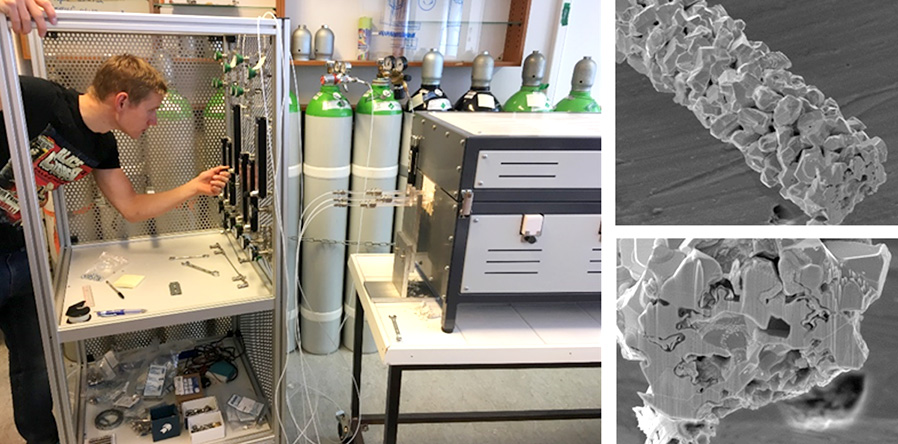WorkPackage 1 - Research at iCSI
21st century Ammonia oxidation and Nitric acid technology development

iCSI is working to improve catalysts and associated technology applied in the production of nitric acid (HNO3) from ammonia (NH3).
Nitrogen fixation represents one of the most critical chemical processes to sustain the world’s population and is associated with four Nobel prizes in Chemistry (Ostwald 1909, Haber 1918, Bosch 1931, Ertl 2007) that led to step changes with respect to viability and efficiency. Haldor Topsøe A/S is among the global developers/suppliers for ammonia technology.
NH3 may be applied directly as fertilizer, but further processing to HNO3 allows higher fertilizer efficiency and sustainability, as well as safer and easier distribution as nitrate pellets in optimized combinations with other nutrients (P, K, etc.). Ammonia oxidation to NO was originally developed by Ostwald (1909 Nobel laureate), and requires a selective catalyst working at elevated temperature (8-900 ºC) and short contact time. The NO is further homogeneously oxidized to NO2, which is then absorbed in water. Yara is among the main developers and operators of NH3 and HNO3 technology world-wide.
Industrially, the catalyst for NH3 oxidation exists in the form of metallic gauzes (Pt-Rh) that represent high cost. Due to stability and selectivity (> 90% selectivity), these still remain the preferred alternative, while Pt-Rh particles on structured support as well as mixed metal oxides are currently explored as alternatives. KA Rasmussen holds advanced technology to produce uniform, high mesh Pt-Rh gauzes for this process, representing state-of-the art.
Control of the process conditions (temperature and contact time) is crucial to maintain high selectivity and stability. During operation significant restructuring occurs for the catalyst, accompanied by loss of Pt (see pictures below). Recovery solutions are thus normally installed downstream. Mixed metal oxides as low-cost alternatives to ammonia oxidation catalysts show inferior activity so far and differ in selectivity in the sense that more N2 and less N2O are present among the by-products.


PtRh gauze – fresh and after use in ammonia oxidation. Photo: Edvard Bergene
Contact
Professor, Department of Chemistry, Section of nanostructured and functional materials (NAFUMA), University of Oslo (UiO)
Email: a.o.sjastad@kjemi.uio.no
Industrial partners






